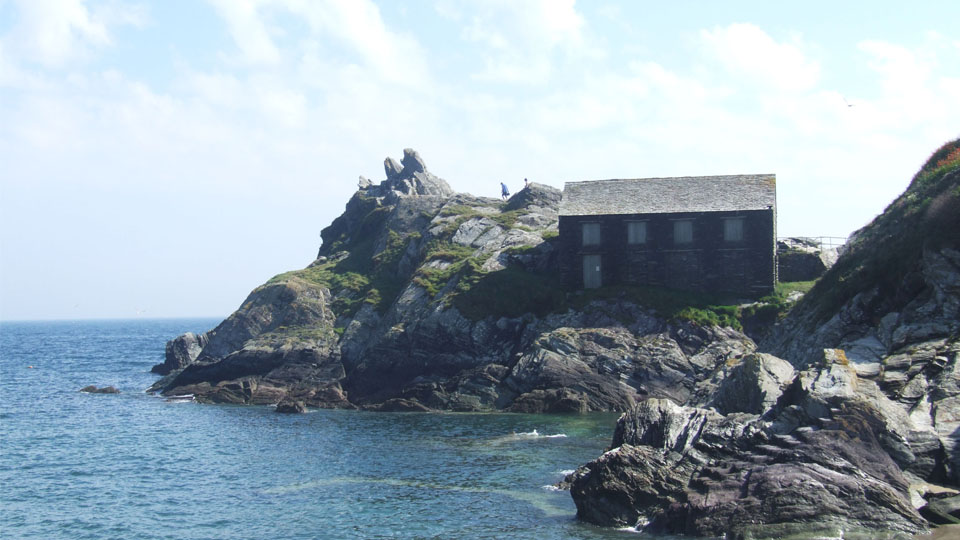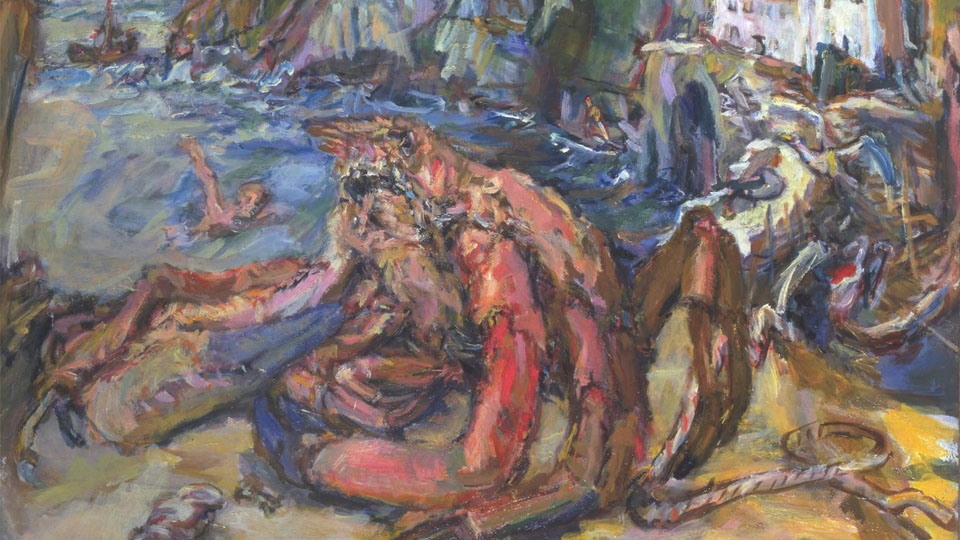
Jackie Harding tells of her time walking from Talland Bay to Polruan earlier in spring this year.
In this new regular series of features she will be mapping these kinds of stories onto the physical landscape of the Cornish coast. Read on to discover more.
Three weeks after walking this remote stretch of Cornish coast, and more than three centuries after the Bishop’s imprisonment, we found ourselves marching through London to Parliament Square under a banner reading “Trelawny’s Army”, part of a mass protest against this government’s austerity politics.
The Manor of Portallant was mentioned in the Doomsday Book. The western wing of The Talland Bay Hotel, where we stayed, dates from the sixteenth century and was the seat of the Trelawny family for three hundred years. The most famous Trelawny, imprisoned in the Tower by James II in 1688, is celebrated in the unofficial Cornish National Anthem: “And shall Trelawny die?” His grandfather had also been imprisoned by Parliament and there had already been two earlier, bloodier, Cornish uprisings against the English.
We heard that we could catch a boat from Polperro to Polruan so we set off to investigate. Unfortunately, a large part of the coast path between Talland Bay and Polperro was inaccessible. It had been closed for months and was already overgrown. In this age of austerity, it may never be re-opened: it would be a tragedy if parts of it became the reserve of a few rich land owners.
We arrived in Polperro at teatime and were directed to the Blue Peter. The sailors outside, friendly and obliging, were nonetheless unable to help us plan a boat trip due to an unpromising weather forecast; the coast between Talland Bay and Polruan has been the scene of many shipwrecks including that of a French trawler, the Marguerite, in March 1922. Bungee from Birmingham in the kitchen, however, proved to be an expert in local buses and everyone in the pub, fishermen, bartenders, locals and fellow walkers, assured us that the walk from Polperro to Polruan was perfectly manageable.
Polperro retains the character of a remote, un-commercialised fishing village with a picturesque fifteenth century harbour that has attracted artists like the Czech expressionist, Oskar Kokoschka, whose intense, rich paintings merge swirling seascapes with political allegory.

The port’s inaccessibility led to a thriving smuggling industry. The lanes are narrow, the stone cottages close to each other, and rumours of secret passageways and tunnels abound. It was nigh on impossible for customs men to catch the Cornish, who viewed their trade as legitimate rebellion against an English system that benefitted them very little.
The contraband trade during the Napoleonic wars was masterminded by Zephaniah Job, who also worked for the Trelawnys and for various privateers whose adventures led to great profits. Less successfully, in 1979, a drugs smuggling gang was caught red-handed in Talland Bay, storing their stash in the cellar of the beach café.
The next morning, in spite of the sailors’ predictions, the sun shone all day in clear blue skies and a gentle breeze created perfect conditions for our walk. This was just as well as the path was demanding in places with very steep sections leading down to streams running into the sea and climbing up again. In spite of the difficulties, indeed, maybe because of these difficulties, which engendered a feeling of achievement and appreciation of the remoteness of this area, the walk was wonderful.
We walked through fields of buttercups and daisies. The path was bordered with pink campions and wild garlic, the last of the bluebells and foxgloves. Gorse shone reddish gold and released the scent of fresh apricots as we brushed past. Dried grass underfoot smelt of summer. Cuckoo spit harboured developing frog-hoppers and we saw scores of caterpillars emerging from communal silken cocoons nestled in the gorse bushes.
Butterflies danced around us, yellow polka dot, emerald and dusty lilac, their names redolent of the Cornish coast: grizzled skipper, brimstone, silver-washed fritillary, small heath. Wild ponies grazing above Lantic Bay rolled playfully on the moorland, oblivious. In the deep blue sea below we spotted a silent invasion of barrel jellyfish but birds and pleasure boats continued to criss-cross the horizon.
The peace was occasionally broken by a muffled report from the nearby naval firing practice area and all too soon, unexpectedly, we reached Polruan. Surrounded on three sides by water, Daphne du Maurier wrote and set her first novel here. The Loving Spirit is based on the life of Jane Slade of a local ship-building family. The small working harbour smacks still of piracy and romance. A dredger we had seen beyond Black Bottle Rock from the cliffs above Lantic Bay was nudged into position at the wharf by a small cutter. Paint fumes filled the air as men sprayed the hull of the Strathspay II.
We walked up to the Block House, built in the fifteenth century to defend the estuary from marauding Spaniards. Known as Polruan Castle, romance is etched into the very fabric of the building, “Bill Married Beryl May 1958”.
After a drink at the Lugger Inn, overlooking the estuary where boys jumped into the quay and a stranded jellyfish on the sand was a source of fascination for dads and small children armed with buckets and spades, we boarded Bungee’s bus back to Polperro, back to the realities of twenty-first century Britain.
If you enjoyed reading this article, you can read Jackie’s previous entry for last month here.
Landscape photography by Rosie Beale, a mature student, who has completed her FdA English Studies at Truro College in Cornwall. She is now reading BA English at Plymouth University and is looking forward to a career in publishing and writing.
